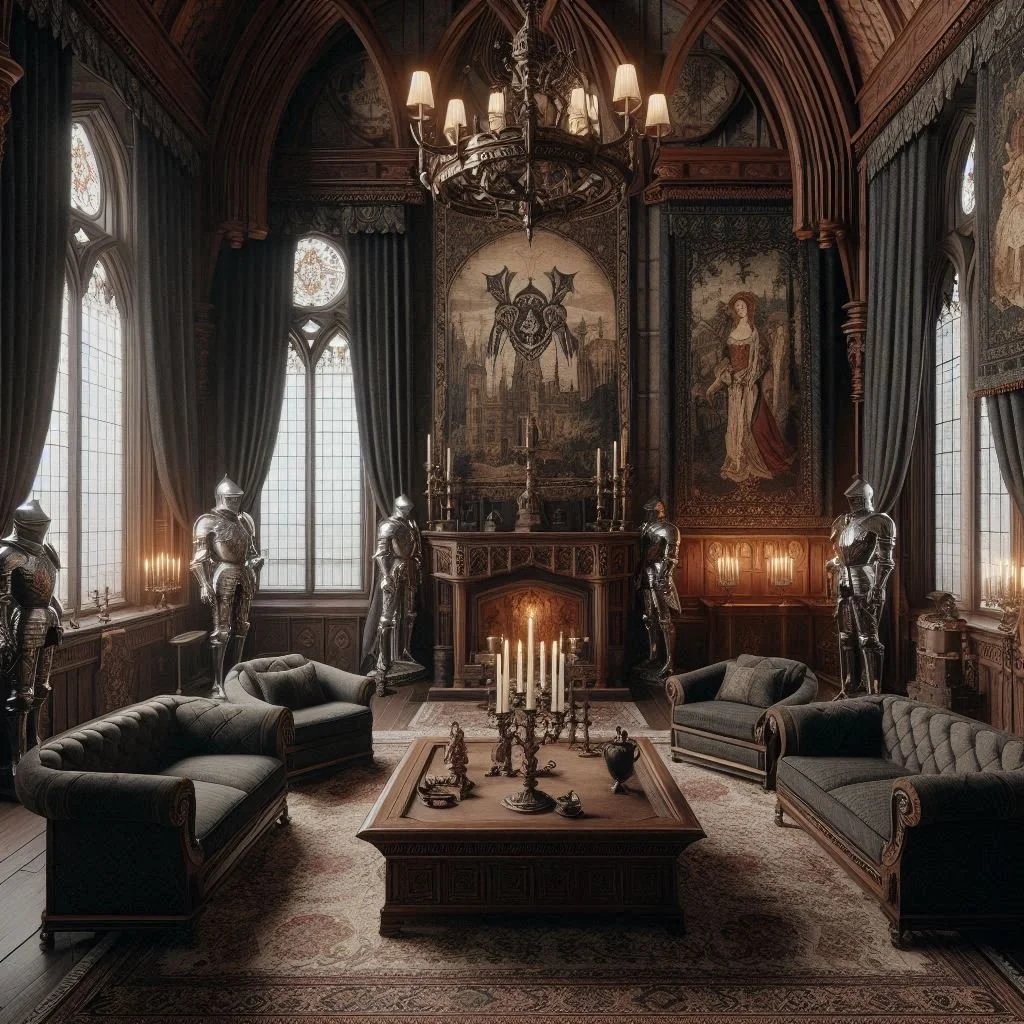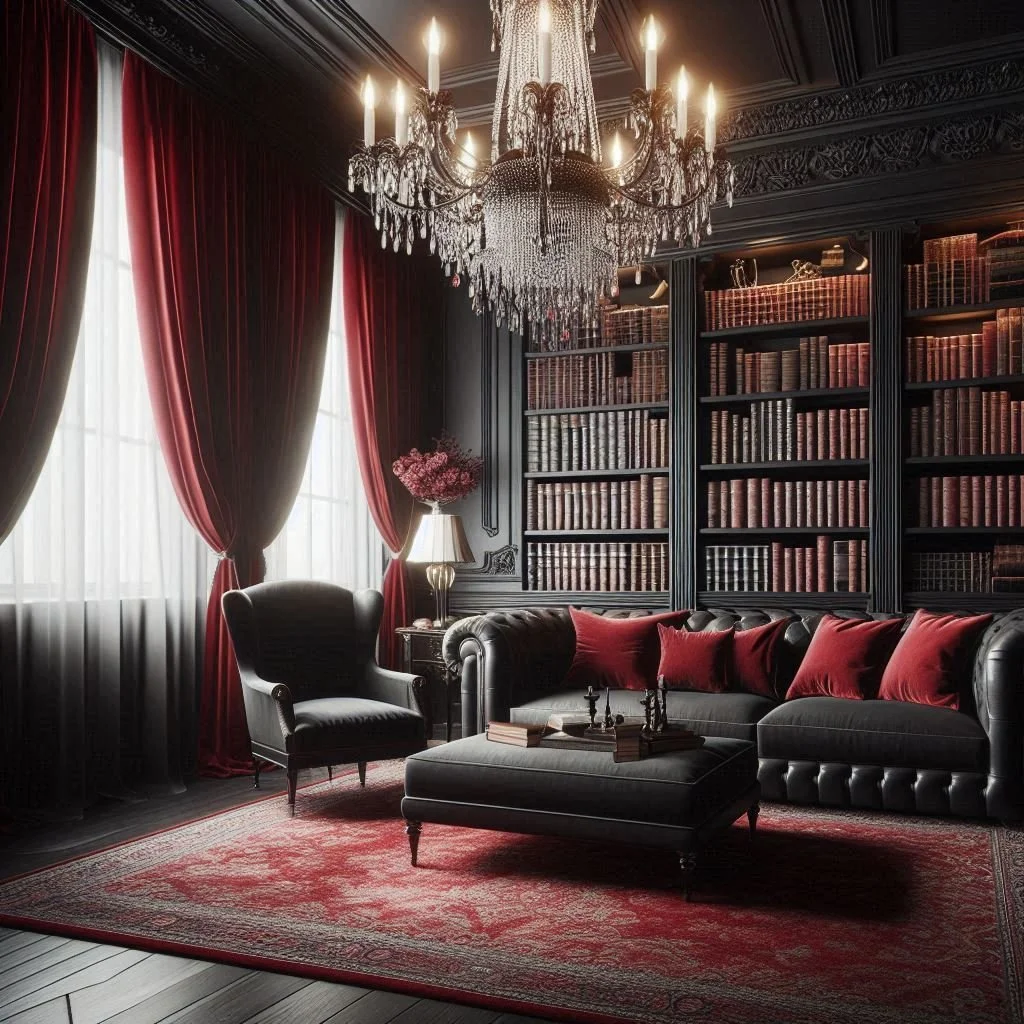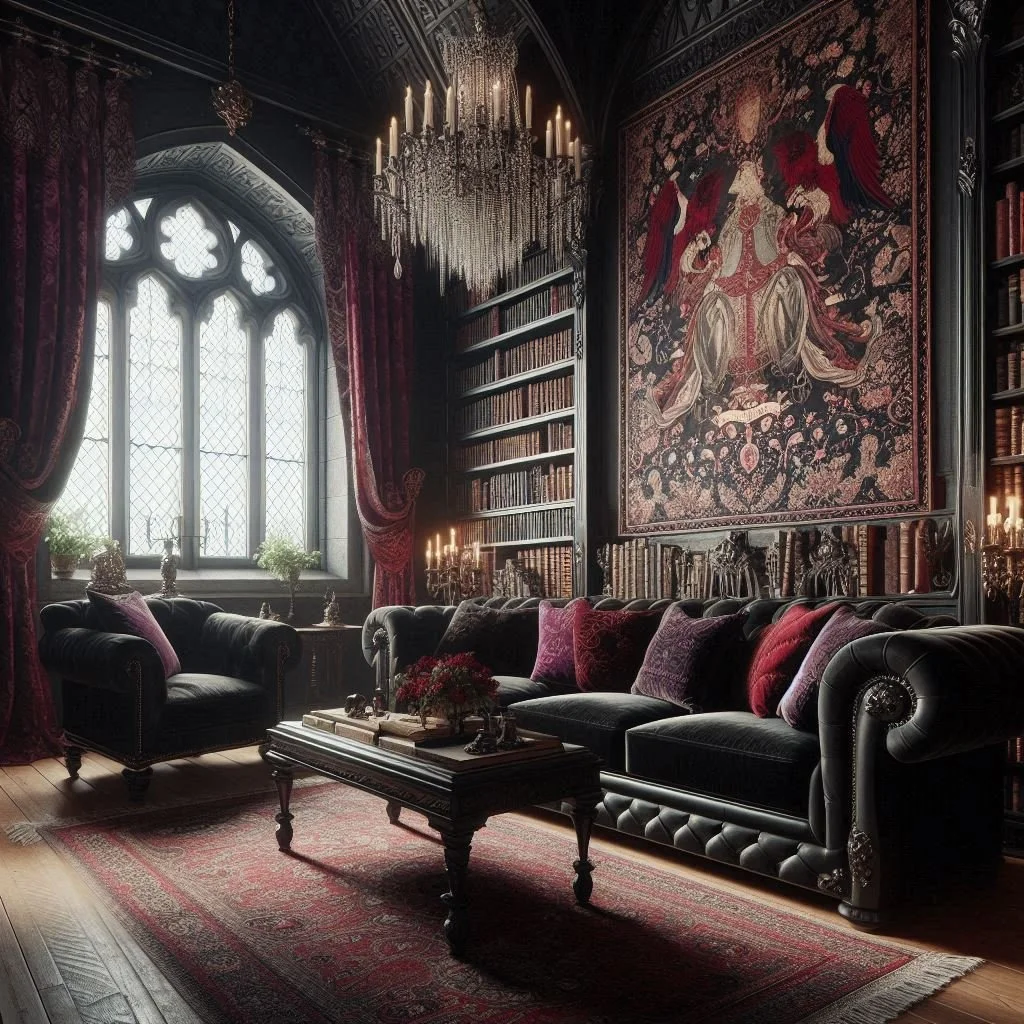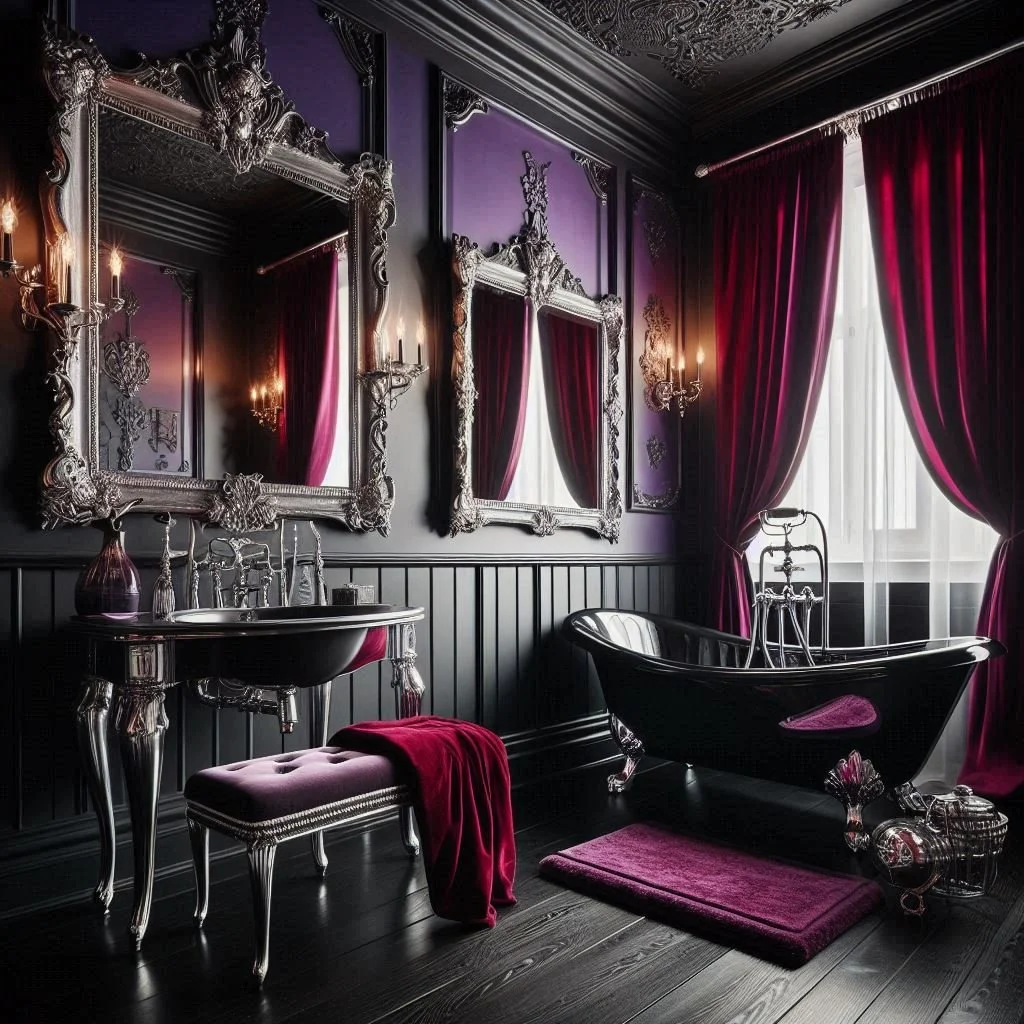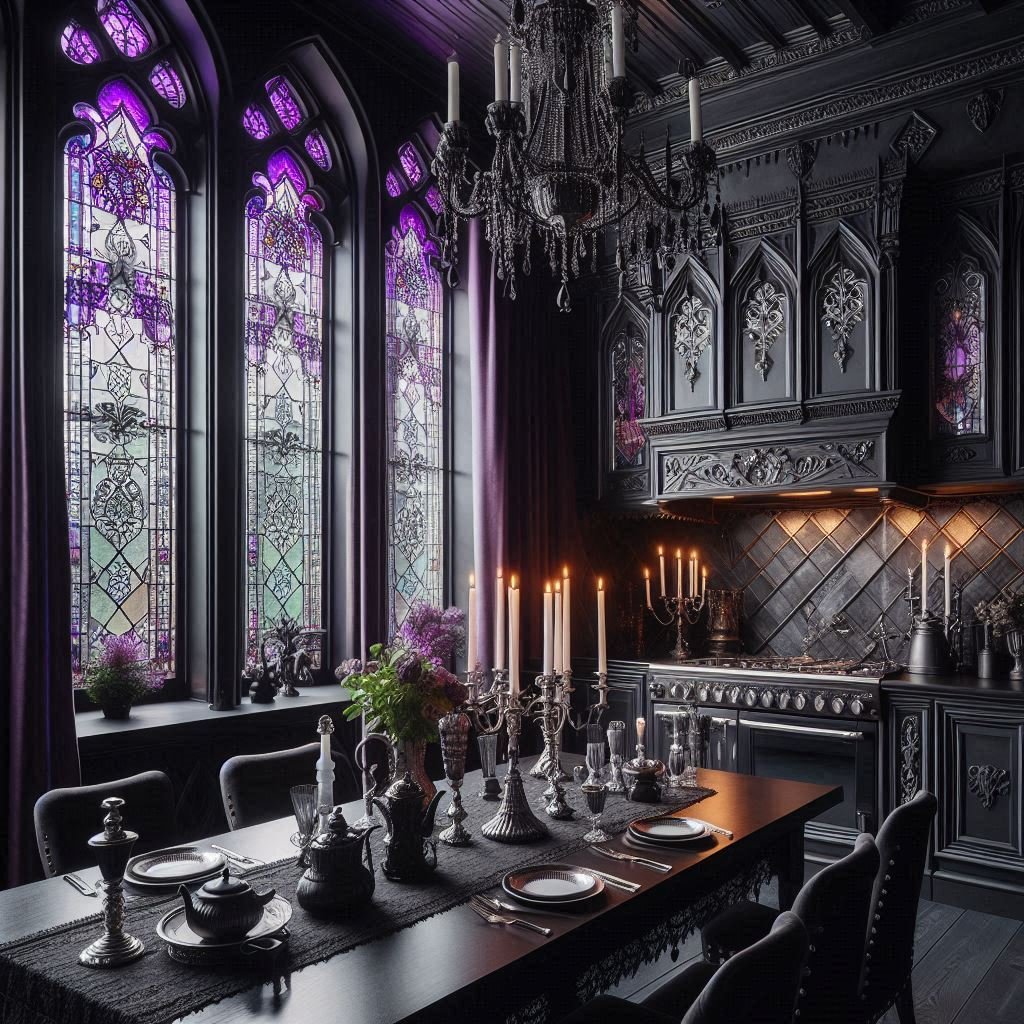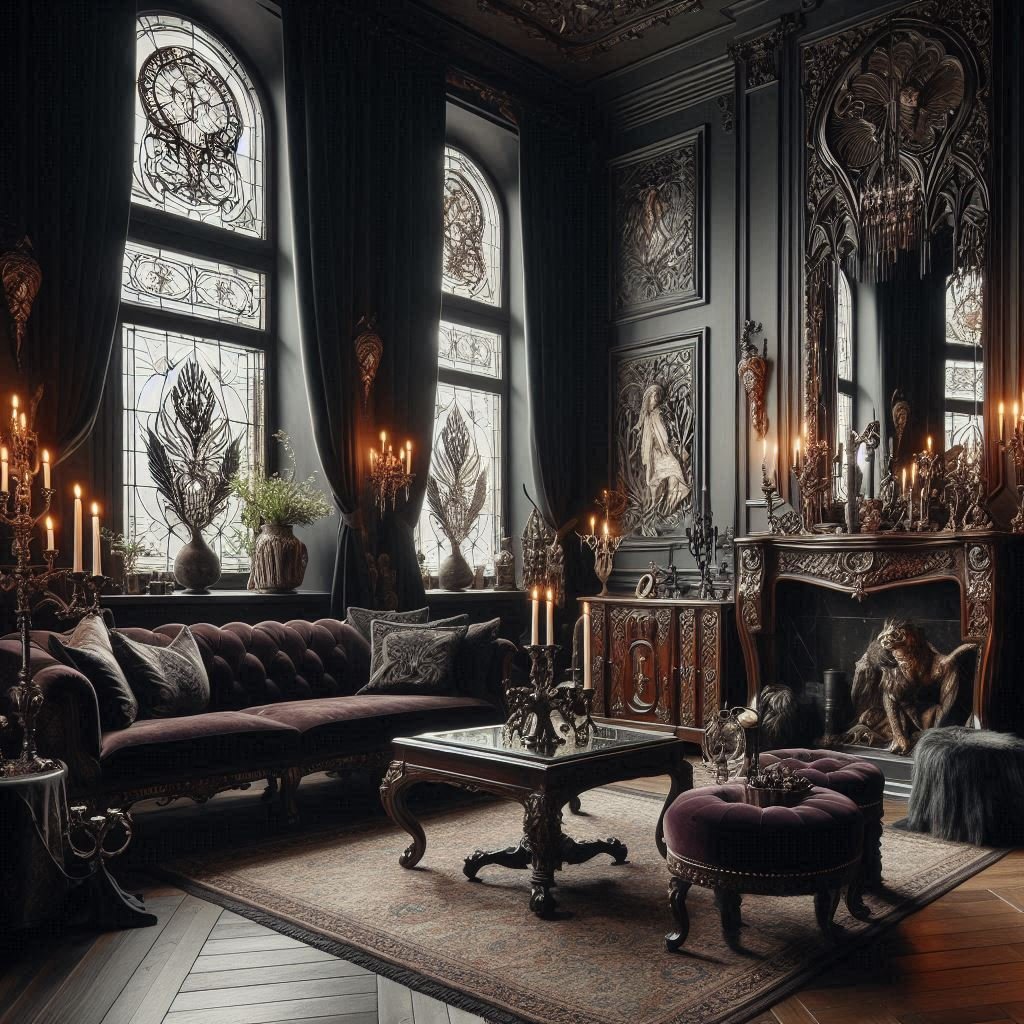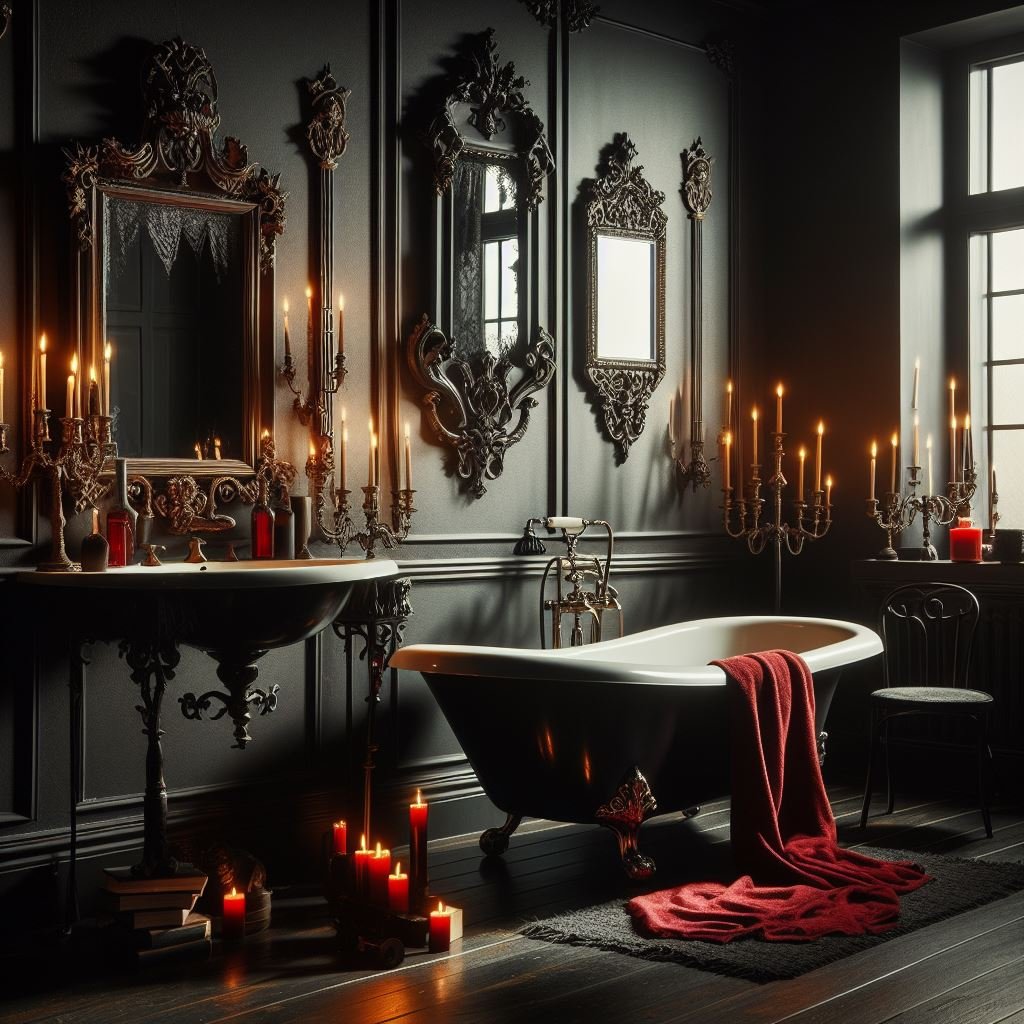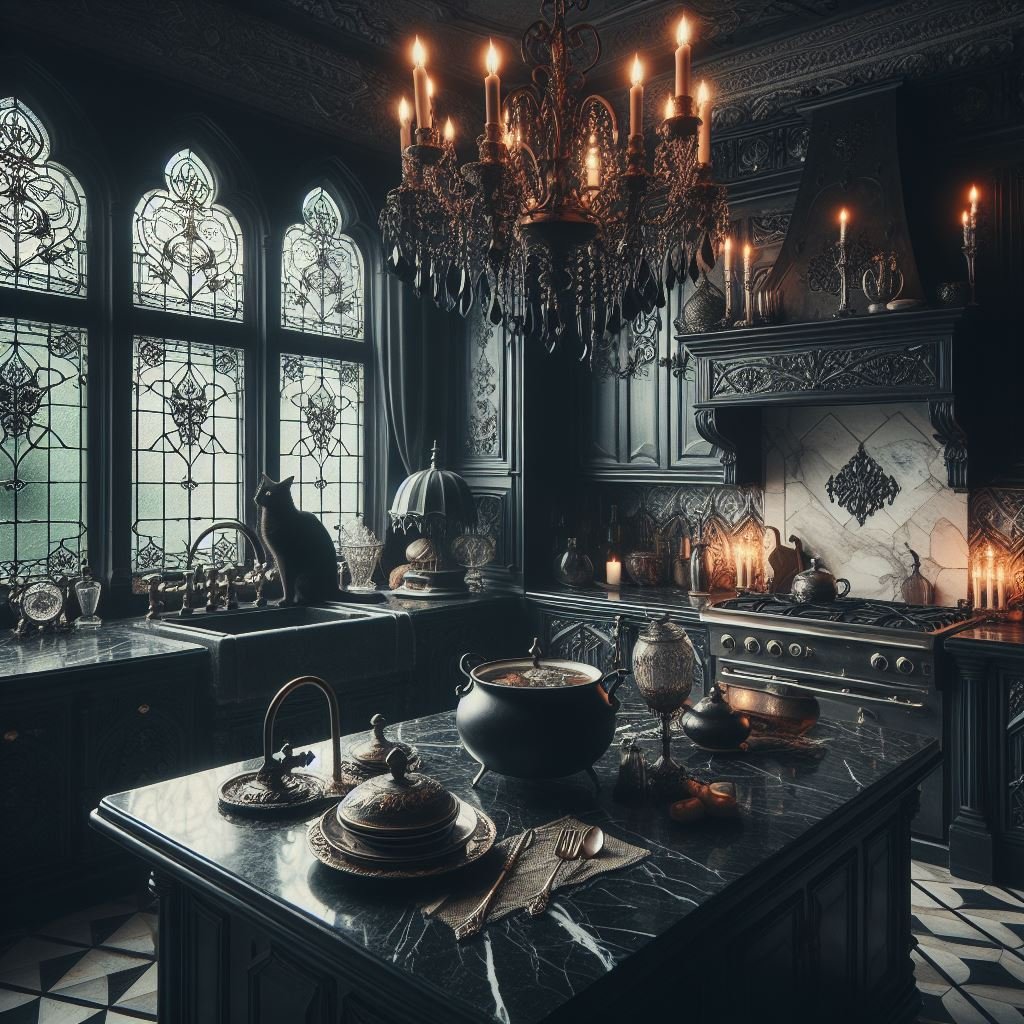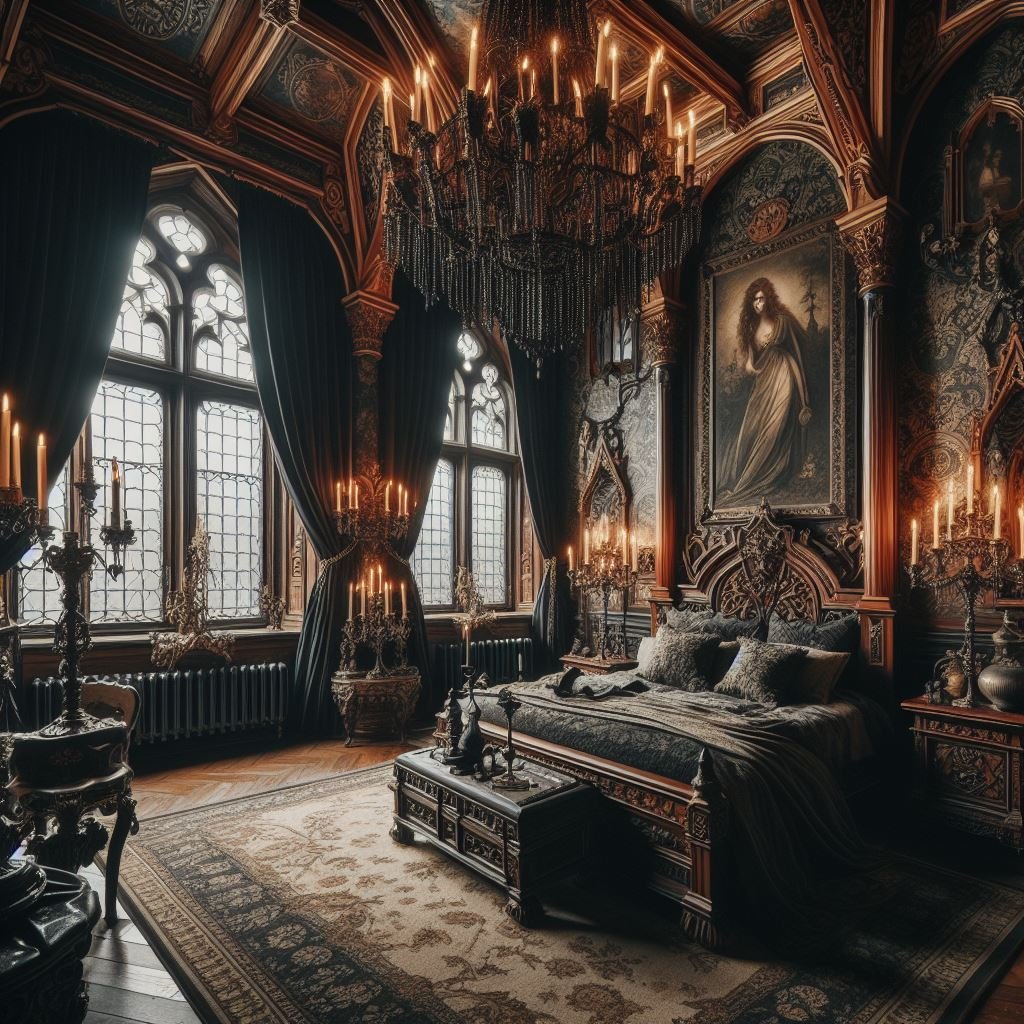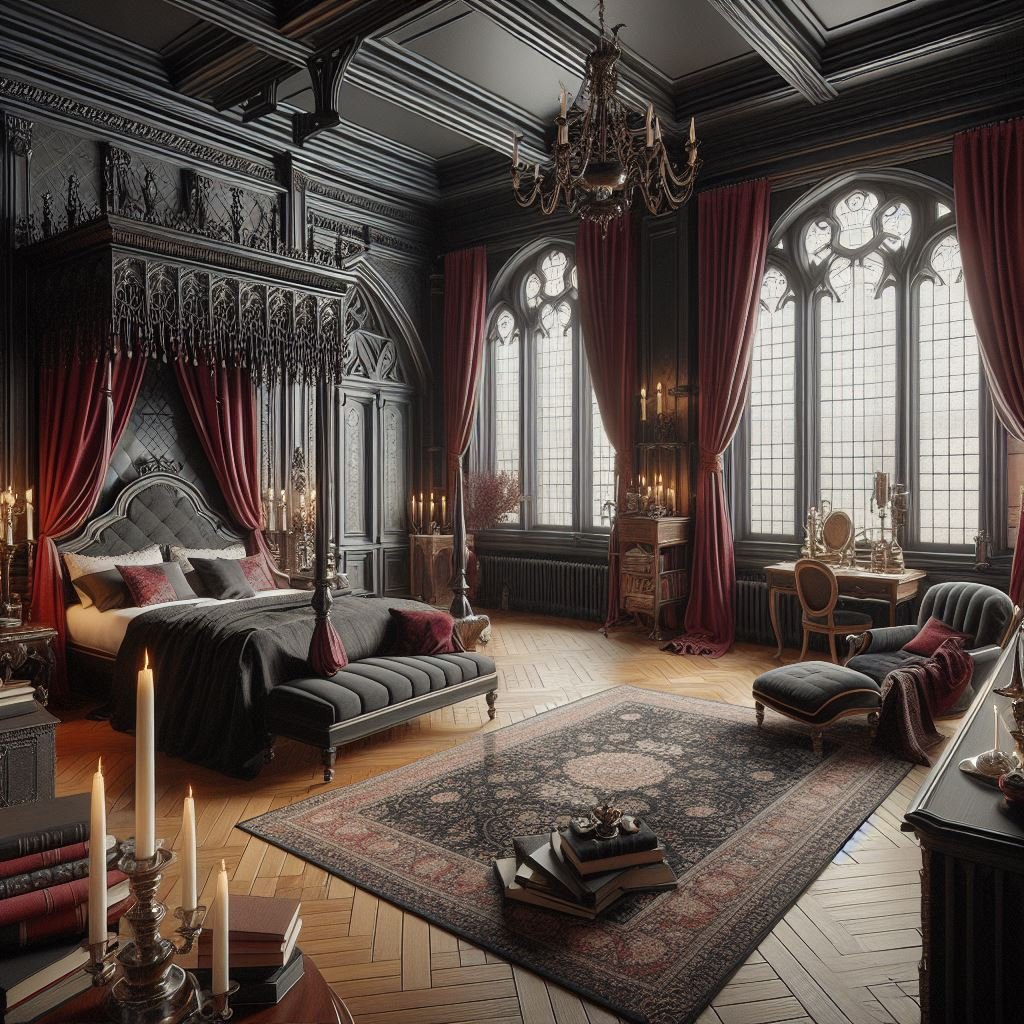What is Gothic Interior Design Style?
Discover the captivating world of Gothic interior design style. Explore its rich history, key elements, and how to incorporate its dramatic, elegant features into your home decor.
Ever wondered about the allure behind dark, dramatic interiors with an almost mystical charm? Welcome to the world of Gothic interior design, where history and mystery blend seamlessly to create stunningly beautiful and evocative spaces. So, what is Gothic interior design style, and why does it continue to captivate hearts and homes? Let's dive into this fascinating aesthetic, unravel its key elements, and uncover how you can infuse your home with its enchanting elegance.
A Brief History of Gothic Interior Design
To truly appreciate Gothic interior design, a quick jaunt back in time is essential. Originating in the medieval period, Gothic design is rooted in the grand cathedrals of Europe, characterized by towering arches, intricate stonework, and stained glass windows. The style evolved over centuries, weaving its way into residential architecture and interior decor, embodying a sense of drama and sophistication.
Key Elements of Gothic Interior Design
Understanding what makes Gothic interior design so unique requires a closer look at its fundamental elements:
Architecture and Structure: Think soaring ceilings, pointed arches, and ribbed vaults. These architectural details create a sense of grandeur and space, reminiscent of ancient cathedrals.
Dark Color Palette: Rich, deep colors dominate Gothic interiors. Black, dark red, deep purple, and emerald green are commonly used to evoke a moody, atmospheric feel.
Ornate Detailing: Intricately carved woodwork, wrought iron fixtures, and elaborate moldings add layers of detail and craftsmanship to the space.
Stained Glass Windows: A nod to its ecclesiastical roots, stained glass windows are a hallmark of Gothic design, casting colorful patterns of light throughout the room.
Gothic Furniture: Heavy, solid wood furniture with elaborate carvings and rich upholstery create a sense of weight and permanence.
Textiles and Fabrics: Luxurious fabrics like velvet, brocade, and damask in dark hues add texture and opulence.
Bringing Gothic Interior Design into Your Home
Ready to transform your living space with Gothic interior design? Here's how you can incorporate its key elements:
1. Embrace the Architecture
If your home already has architectural features like high ceilings or arched windows, you're in luck. Highlight these features by painting them in dark, rich colors or adding ornate moldings to enhance their elegance. For modern homes, consider adding faux beams or Gothic-style archways to create a similar dramatic effect. These additions can add character and depth, transforming your space into a visually stunning environment. By emphasizing these architectural elements, you create focal points that draw the eye and enhance the overall aesthetic of your home, blending historical charm with modern sophistication.
2. Choose a Dark Color Palette
Begin with a base of deep, rich colors to create a dramatic and sophisticated atmosphere. Consider black walls for a bold statement, or opt for dark jewel tones like emerald green or royal purple to add depth and luxury. Balance these intense colors with lighter accents in furniture or decor to prevent the space from feeling overwhelming. Light-colored textiles, metallic accents, or neutral furniture can provide contrast and keep the room from becoming too dark. This approach ensures a harmonious blend of boldness and elegance, making your space both striking and inviting.
3. Add Ornate Detailing
Introduce carved wood elements wherever possible to enhance the Gothic feel of your home. A grand fireplace mantle, intricate door frames, or detailed window casings can all contribute significantly to this aesthetic. Complement these features with wrought iron fixtures and hardware for an authentic touch. These elements not only add to the visual appeal but also bring a sense of history and craftsmanship to your space. By integrating carved wood and iron details, you create a rich, textured environment that captures the essence of Gothic design, making your home uniquely stylish and evocative.
4. Install Stained Glass Windows
If you can, invest in stained glass windows or panels to elevate the Gothic charm of your home. These don’t have to be original antiques; many modern artisans create stunning stained glass pieces that can be custom-fitted to your windows. The vibrant colors and intricate designs of stained glass add a unique and artistic touch, casting beautiful light patterns that enhance the atmosphere. By incorporating stained glass, you introduce a timeless element that enriches the aesthetic appeal and character of your space, making it both elegant and distinctive.
5. Opt for Gothic Furniture
Look for furniture with a sense of history and grandeur to enhance the Gothic feel of your home. Choose pieces that are solid and substantial, featuring ornate carvings and rich fabrics. Antique shops, flea markets, and online marketplaces are excellent sources for finding unique, character-filled items. These furnishings not only add depth and elegance to your space but also create a cohesive, historically inspired aesthetic. By incorporating such distinctive pieces, you ensure your home exudes a timeless charm and sophistication, making it both inviting and visually captivating.
6. Luxurious Textiles and Fabrics
Drape your home in luxury with rich fabrics to enhance the sumptuous feel of a Gothic interior. Velvet curtains, brocade cushions, and damask upholstery contribute to the opulent ambiance. Don’t shy away from layering these fabrics to add depth and texture, creating a visually rich and tactile experience. Combining various luxurious materials not only elevates the aesthetic appeal but also ensures your space feels warm and inviting. By integrating these rich textiles, you create a decadent and sophisticated environment that captures the essence of Gothic style, making your home both elegant and cozy.
7. Accessorize Thoughtfully
Accessories can make or break a Gothic interior, so choose them carefully to enhance the overall ambiance. Think medieval-inspired candelabras, ornate mirrors, and Gothic art to add character and charm. Look for pieces that have a story to tell, whether they’re genuine antiques or well-crafted reproductions. These accessories should reflect the richness and history associated with Gothic design, contributing to a cohesive and immersive atmosphere. By selecting meaningful and distinctive items, you ensure that your Gothic interior is both visually captivating and deeply evocative, making your home a true reflection of timeless elegance and intrigue.
Incorporating Gothic Interior Design in Different Rooms
Living Room
The living room is the heart of your home, making it the perfect place to showcase Gothic interior design. Opt for a grand fireplace as the focal point, surrounded by dark wood paneling or rich wallpaper to set a dramatic tone. Choose seating with deep, luxurious fabrics like velvet or brocade for a sumptuous feel. Accessorize with Gothic-inspired lighting, such as chandeliers or wall sconces, to enhance the moody ambiance. By combining these elements, you create a living room that exudes elegance and historical charm, making it a captivating and inviting space for relaxation and socializing.
Bedroom
Transform your bedroom into a Gothic sanctuary with a dramatic four-poster bed, complete with heavy drapes. Dark, rich bedding and antique furniture enhance the ambiance, creating a luxurious and historic feel. Consider adding a canopy or an ornate headboard to further elevate the room’s grandeur. These elements combine to craft a space that is both elegant and inviting, perfect for a restful retreat. By focusing on rich textures and intricate details, your bedroom becomes a true Gothic haven, exuding sophistication and timeless charm.
Bathroom
Yes, even bathrooms can embrace Gothic design! Choose dark tiles or paint to set a dramatic tone, and look for fixtures with an antique feel. A clawfoot tub adds a touch of vintage luxury, while ornate mirrors and vintage-inspired lighting enhance the Gothic atmosphere. These elements come together to create a bathroom that is both elegant and moody, transforming a functional space into a stylish retreat. By incorporating dark hues and historical details, you can achieve a Gothic-inspired bathroom that exudes sophistication and timeless charm.
Kitchen
In the kitchen, focus on cabinetry and hardware to enhance the Gothic feel. Opt for dark wood cabinets with wrought iron handles, paired with stone countertops to create a rich, textured look. Antique-style faucets add a touch of historical elegance, blending seamlessly with the Gothic aesthetic. Don't forget the lighting—an iron chandelier can serve as a stunning focal point, casting a warm, inviting glow. These elements together create a kitchen that is both functional and visually captivating, exuding the timeless charm and sophistication characteristic of Gothic design.
Maintaining Balance in Gothic Interior Design
While the Gothic interior design style emphasizes drama and opulence, maintaining balance is crucial to avoid a space feeling heavy and oppressive. Incorporate lighter elements and reflective surfaces to achieve harmony. Use mirrors, glass, and strategic lighting to brighten the space and provide contrast to darker features. These additions can enhance the overall aesthetic, making the room feel more open and inviting. By thoughtfully blending dark, dramatic elements with light, reflective accents, you create a Gothic interior that is both captivating and balanced, ensuring a sophisticated yet comfortable environment.
Conclusion
The Gothic interior design style offers a unique blend of drama, elegance, and history, making it a captivating choice for those looking to create an unforgettable space. By embracing its key elements—dark color palettes, ornate detailing, and luxurious fabrics—you can transform your home into a Gothic masterpiece. Whether you're going all-in on the Gothic aesthetic or incorporating select elements for a touch of drama, the result is sure to be a space that is both enchanting and inviting. So, why not embark on this design journey and unlock the mystique of Gothic interior design in your home?
Frequently Asked Questions
What is Gothic interior design style?
Gothic interior design style is characterized by its dramatic, opulent aesthetic, which draws inspiration from medieval architecture and ecclesiastical design elements. Key features include high ceilings, pointed arches, dark color palettes, ornate detailing, and luxurious fabrics.
How can I incorporate Gothic design into my modern home?
Even in a modern home, you can incorporate Gothic design by focusing on key elements like a dark color palette, ornate detailing, and luxurious textiles. Adding architectural features like faux beams or archways, as well as Gothic-inspired furniture and accessories, can also help achieve the look.
Is Gothic interior design suitable for small spaces?
While Gothic design is often associated with grand, spacious interiors, it can be adapted for smaller spaces. Focus on key elements like rich colors, luxurious fabrics, and ornate detailing, but be mindful of balance to avoid overwhelming the space.
Can I mix Gothic design with other styles?
Absolutely! Gothic design can blend beautifully with other styles, such as Victorian, industrial, or even modern. The key is to find a harmonious balance that allows the Gothic elements to shine without clashing with other design aspects.
Where can I find Gothic furniture and decor?
Antique shops, flea markets, and online marketplaces are great places to find unique Gothic furniture and decor. Look for pieces with intricate carvings, rich fabrics, and a sense of history to add authenticity to your space.

